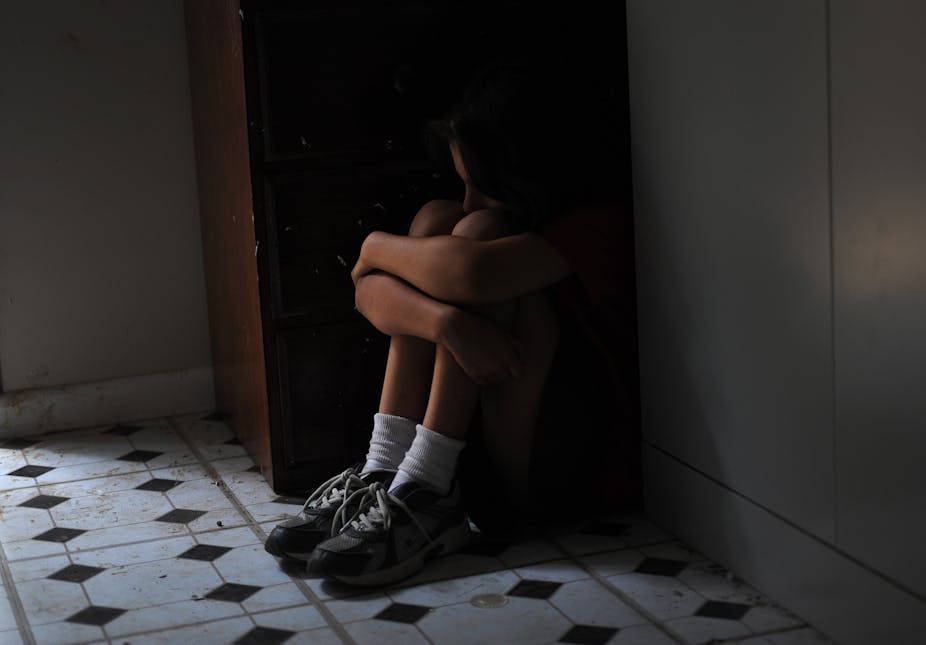Trauma from domestic abuse causes suffering and pain in multiple ways. We often think first of the physical impact of domestic violence, but new research shows domestic violence can force women into lower-quality housing – or make it harder to find a home altogether.
Domestic violence is the primary reason for women’s homelessness. Safe, appropriate housing and the economic resources to maintain it are two of the most pressing concerns for women wanting to escape domestic violence.
Following separation from a violent partner, women and their children are likely to experience significant income loss, financial hardship and housing instability, particularly women who are at least partially financially dependent on their partners.
In other words, housing affordability is one of the primary issues women are forced to confront when deciding whether or not to leave a violent relationship. The prospect of high rents and scarce housing supply may even be causing women and children to remain in dangerous situations.
The cost of leaving
Dr Carole Zufferey, Professor Suzanne Franzway, Professor Donna Chung, Dr Nicole Moulding and I have been researching the intersection of domestic violence and the housing affordability crisis. We have just completed a study that examined the compounding effects of domestic violence on women’s housing, employment and mental health in Australia, funded through the Australian Research Council Discovery Grant Scheme.
For this project, 658 women completed a national online survey during 2013-2014 and 79% of the sample had children. Participants were recruited through advertisements and contact with national and local domestic violence and housing services across Australia.
We found that while experiencing domestic violence, 50.8% of the participants owned their home. Immediately after leaving the violent relationship, only 13.4% owned their home. At the time of completing the survey, 37.1% owned their home.
Immediately after leaving, 26.7% were in a rental property and 46.9% of women lived in temporary dwellings, which included caravans, shelters, staying with friends/family (33%), cars or parks.
For the majority of women (67%), housing costs increased after separation, which obviously affects the choice of home they could afford. In other words, leaving a violent relationship came at a big financial cost for the women.
At the same time, the majority of women reported being on a much lower income, with many having to leave their jobs after their relationship ended. Many experienced financial insecurity and poverty, which compounded housing affordability and safety.
The cost of violence
The housing problems women face once they leave a violent relationship are complex and multiple. Financial losses as a consequence of leaving a violent relationship impact women’s housing status, choices and practices.
For example, we found women often had to pay for a violent partner’s property damage and debts, which affected their ability to access and afford adequate rental housing. Alternatively, legal costs and non-payment of child support after separation reduced income for housing.
Women who were or had been home owners experienced unequal and lengthy property settlements, with many women settling for less because they feared their partner.
One woman said:
property damage from him… the place was in my name… it’s held against me in finding rental.
Another woman said:
He hadn’t paid bills for several years and would lie, saying he had paid them while hiding the bills… I was left with overdue rates, other debts and the house is in unmanageable state of disarray.
We also found that the most frequently used description in the data on housing was the loss of a “safe home”. Among participants surveyed, 42% of women (and their children) had to make frequent moves to escape violence. This disconnected them from communities, schools and a sense of “home”.
Fear also impacts on women’s decision-making about their housing choices and options.
One woman said:
I will never have a home of my own or a place that I feel is my home – safe, secure and private.
Another woman said:
I have felt invaded, under siege, at every house I have been in… I needed to pay for increased security measures, sensor lights, high fencing, lockable gates. I slept with my bedroom light on and my mobile under my pillow.
Our study also found that feelings of shame that accompany domestic violence also hindered women’s decisions and abilities to seek out housing services and assistance.
Women reported feeling shame when they asked friends and family for help, when they applied for private rental or public housing and when they used health and welfare services for domestic violence.
One woman said:
We had to go into housing commission rental that was very demoralising for me. My children suffered… I had lost everything I had worked for, most of my furniture [and was] made to feel second rate and that made my self-esteem even worse.
Staying in the family home
In Australia, the funding of public housing has been curtailed and average house prices are increasing relative to income. The proportion of first homeowners has fallen and there is increasing competition for housing in the private rental market where landlords exercise considerable discretion in choice of tenant.
The majority of women experiencing domestic violence are forced to leave their homes for their own and children’s safety, and they are systematically disadvantaged as they enter the rental housing market.
They are forced to tackle this terrain while experiencing fear, parenting traumatised children and often enduring financial hardship.
To prevent homelessness and housing instability for women and their children, we need to continually look for ways that enable women to seek protection from domestic violence and remain in the family home, while the perpetrator is removed. This supports women and their children to maintain connections to their homes and communities, social support networks, employment and educational opportunities and it provides stability for children.
Housing, legal and domestic violence systems and services must continually work together toward this goal.

